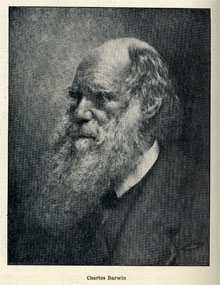Darwin’s second anniversary (1959)

The celebration in 1959 marking the 150th anniversary of Darwin’s birth and the 100th anniversary of the publication of On the Origin of Species was to a great extent controlled by elitist academic interests. No one saw the contradictions between the theory of evolution and genetics any longer and with the discovery of DNA in 1953, the foundation was secured. Once again, Darwin’s anniversary became a celebration of present science and how far the research and utilisation of nature had come.
In the shadow of the Cold War years, there was furthermore a need for positive role models. Darwin was perfect for that purpose. At the same time, science history had obtained a place at several universities as a young but independent field. Here, academic identity and substantiated terms of existence were required. After the end of World War II, many viewed the natural sciences as what would prevent a similar situation from happening again. Mathematics was seen as a universal language that crossed both cultural and language barriers and science was placed in the centre as a pacifistic movement in which Darwin conveniently could be used as an ambassador who everyone could gather around.
During the following years, it was therefore important, as far as the scientific community was concerned, to sustain a pure image of Darwin as the essence of the objective, untainted and incorruptible science. Meanwhile, a lot of new material saw the light of day which was not consistent with the pure and picture perfect scientific image that scientist felt that they needed. The official scientific image became increasingly more difficult for the science historians and philosophers to maintain which often led to heated conflicts with scientists. Who should represent the official image of Darwin?
Peter C. Kjærgaard









